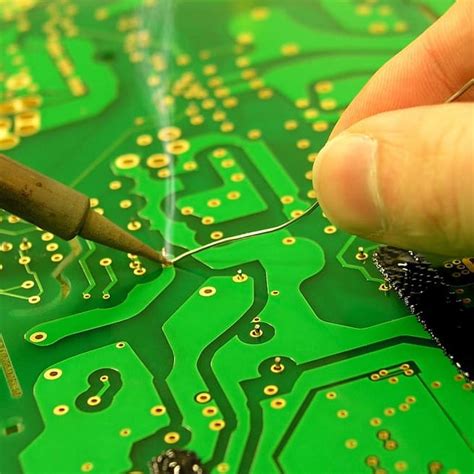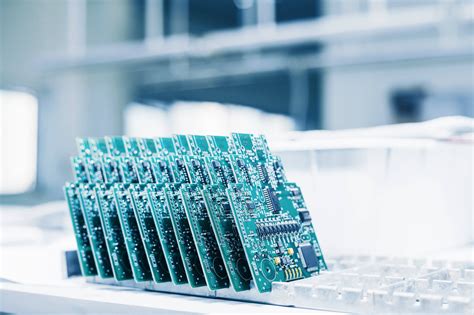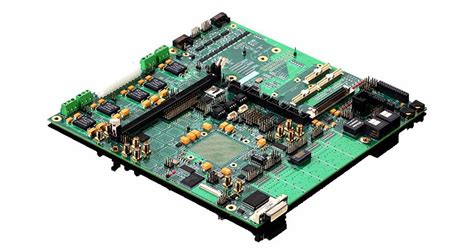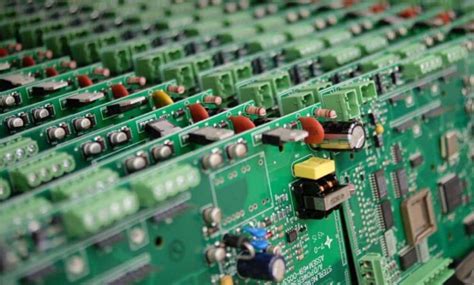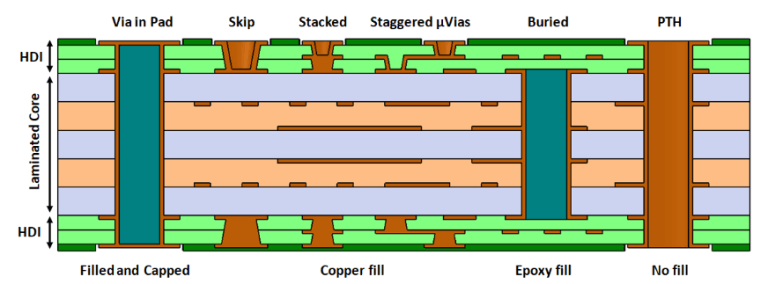Ipc flex pcb
Advantages Of Using IPC Flex PCB In Modern Electronics
In the rapidly evolving landscape of modern electronics, the demand for more efficient, compact, and reliable components has never been greater. One technological advancement that has significantly contributed to meeting these demands is the IPC Flex PCB, or flexible printed circuit board. These innovative circuit boards offer a multitude of advantages that make them indispensable in contemporary electronic applications. Understanding these benefits is crucial for engineers and designers who aim to optimize their products for performance and durability.
To begin with, one of the most notable advantages of IPC Flex PCBs is their inherent flexibility.
Unlike traditional rigid PCBs, flexible PCBs can be bent, folded, and twisted without damaging the circuits. This flexibility allows for more creative and efficient use of space within electronic devices, which is particularly beneficial in compact gadgets such as smartphones, wearable technology, and medical devices. The ability to conform to various shapes and spaces not only enhances the design possibilities but also contributes to the miniaturization of electronic products, a trend that continues to dominate the industry.
Moreover, IPC Flex PCBs are known for their lightweight nature.
The materials used in their construction, such as polyimide or polyester films, are significantly lighter than those used in rigid PCBs. This reduction in weight is a critical factor in applications where every gram counts, such as in aerospace and portable consumer electronics. By reducing the overall weight of the device, manufacturers can improve energy efficiency and user convenience, which are key considerations in today’s environmentally conscious market.
In addition to their flexibility and lightweight properties, IPC Flex PCBs offer enhanced reliability and durability.
The materials used in these PCBs are not only flexible but also robust, capable of withstanding harsh environmental conditions such as extreme temperatures, vibrations, and moisture. This resilience makes them ideal for use in automotive and industrial applications, where reliability is paramount. Furthermore, the reduced number of connectors and interconnects in flex PCBs minimizes potential points of failure, thereby increasing the overall reliability of the electronic system.
Another significant advantage of IPC Flex PCBs is their ability to improve signal integrity.
The design of flexible PCBs allows for shorter and more direct routing of electrical paths, which reduces the risk of signal loss and electromagnetic interference. This is particularly important in high-frequency applications where maintaining signal quality is crucial. As a result, devices that incorporate IPC Flex PCBs can achieve better performance and efficiency, which is a compelling advantage in competitive markets.
Furthermore, the use of IPC Flex PCBs can lead to cost savings in the long run.
Although the initial design and manufacturing costs may be higher compared to traditional PCBs, the benefits of reduced material usage, lower assembly costs, and improved reliability can result in significant savings over the product’s lifecycle. Additionally, the ability to integrate multiple components into a single flex PCB can simplify assembly processes and reduce the need for additional connectors and cables, further contributing to cost efficiency.
In conclusion, the advantages of using IPC Flex PCBs in modern electronics are manifold. Their flexibility, lightweight nature, enhanced reliability, improved signal integrity, and potential for cost savings make them an attractive choice for a wide range of applications. As the demand for more sophisticated and compact electronic devices continues to grow, the role of IPC Flex PCBs in shaping the future of technology is set to become even more significant.

Design Guidelines For IPC Flex PCB Manufacturing
In the realm of modern electronics, the demand for flexible printed circuit boards (PCBs) has surged, driven by the need for compact, lightweight, and versatile electronic devices. The IPC standards, which are globally recognized guidelines for PCB manufacturing, play a crucial role in ensuring the quality and reliability of these flexible circuits. Understanding the design guidelines for IPC flex PCB manufacturing is essential for engineers and designers aiming to produce high-performance and durable products.
To begin with, one of the fundamental aspects of designing IPC-compliant flex PCBs is material selection
The choice of substrate material significantly impacts the flexibility, thermal performance, and overall durability of the PCB. Polyimide is a popular choice due to its excellent thermal stability and flexibility. However, designers must also consider factors such as dielectric constant and moisture absorption, which can affect the electrical performance of the circuit. By carefully selecting materials that meet IPC standards, manufacturers can ensure that their flex PCBs perform reliably under various environmental conditions.
Transitioning to the layout design, it is imperative to consider the bend radius of the flex PCB.
The bend radius is the minimum radius that the flex circuit can be bent without causing damage. Adhering to IPC guidelines, designers should ensure that the bend radius is at least ten times the thickness of the flex circuit. This precaution helps prevent mechanical stress and potential failure during operation. Additionally, incorporating staggered or offset traces in the bend areas can further enhance the durability of the flex PCB by reducing stress concentration.
Moreover, trace routing is another critical aspect that requires careful attention.
IPC standards recommend maintaining a consistent trace width and spacing to ensure signal integrity and minimize electromagnetic interference. Designers should avoid sharp corners and acute angles in trace routing, as these can lead to stress points and potential cracking. Instead, smooth curves and gradual transitions are preferred to maintain the structural integrity of the flex PCB.
In addition to trace routing, the placement of components on a flex PCB demands meticulous planning.
Components should be strategically positioned to minimize stress during bending and flexing. IPC guidelines suggest placing components away from bend areas whenever possible. If components must be placed in these areas, using flexible adhesive or encapsulation can provide additional support and protection. Furthermore, ensuring proper alignment and orientation of components can prevent mechanical stress and enhance the overall reliability of the flex PCB.
Transitioning to the manufacturing process, it is essential to consider the impact of thermal management on flex PCBs.
Due to their thin and flexible nature, these circuits are more susceptible to thermal stress during soldering and assembly. IPC standards recommend using low-temperature soldering techniques and controlled heating profiles to mitigate thermal damage. Additionally, incorporating thermal reliefs and vias can help dissipate heat effectively, ensuring the longevity and performance of the flex PCB.
Finally, testing and inspection are crucial steps in the IPC flex PCB manufacturing process.
Rigorous testing, including electrical, mechanical, and environmental assessments, ensures that the final product meets the required standards and specifications. By adhering to IPC guidelines throughout the design and manufacturing process, engineers can produce flex PCBs that are not only reliable and efficient but also capable of meeting the demands of modern electronic applications.
In conclusion, designing IPC-compliant flex PCBs involves a comprehensive understanding of material selection, layout design, component placement, thermal management, and testing procedures. By following these guidelines, manufacturers can produce high-quality flex PCBs that meet the stringent requirements of today’s electronic devices, ensuring both performance and reliability.

Common Applications Of IPC Flex PCB In Various Industries
IPC Flex PCBs, or Interconnect Product Consortium Flexible Printed Circuit Boards, have become integral components in a multitude of industries due to their versatility, durability, and efficiency. These flexible circuits are designed to meet the rigorous demands of modern electronic applications, offering a unique combination of flexibility and reliability that traditional rigid PCBs cannot provide. As technology continues to advance, the applications of IPC Flex PCBs are expanding, making them indispensable in various sectors.
One of the primary industries benefiting from IPC Flex PCBs is the consumer electronics sector.
In this fast-paced industry, the demand for smaller, lighter, and more efficient devices is ever-increasing. Flexible PCBs are ideal for this purpose as they can be bent and folded to fit into compact spaces without compromising performance. Smartphones, tablets, and wearable devices often incorporate these flexible circuits to achieve sleek designs and enhanced functionality. The ability to withstand repeated flexing without failure makes them particularly suitable for devices that require frequent handling and movement.
Transitioning to the automotive industry, IPC Flex PCBs play a crucial role in the development of modern vehicles.
As cars become more technologically advanced, the need for reliable and efficient electronic systems grows. Flexible PCBs are used in a variety of automotive applications, including dashboard displays, infotainment systems, and advanced driver-assistance systems (ADAS). Their ability to endure harsh environmental conditions, such as extreme temperatures and vibrations, makes them ideal for automotive use. Furthermore, the lightweight nature of flexible PCBs contributes to overall vehicle weight reduction, which is a critical factor in improving fuel efficiency.
In the medical field, IPC Flex PCBs are revolutionizing the design and functionality of medical devices.
The healthcare industry demands high precision and reliability, and flexible PCBs meet these requirements by providing robust solutions for complex medical equipment. They are commonly used in diagnostic devices, such as MRI machines and ultrasound equipment, where space constraints and the need for precise signal transmission are paramount. Additionally, wearable medical devices, which monitor vital signs and other health metrics, benefit from the flexibility and comfort that these PCBs offer, enhancing patient compliance and overall device effectiveness.
The aerospace industry also capitalizes on the advantages of IPC Flex PCBs.
In this sector, the need for lightweight, durable, and reliable components is critical due to the extreme conditions encountered during flight. Flexible PCBs are used in various aerospace applications, including satellite systems, avionics, and communication equipment. Their ability to maintain performance under high stress and their resistance to radiation make them suitable for use in space exploration and other demanding aerospace environments.
Moreover, the telecommunications industry relies heavily on IPC Flex PCBs to support the infrastructure of modern communication networks.
As the demand for faster and more reliable data transmission grows, flexible PCBs provide the necessary support for high-frequency applications. They are used in antennas, routers, and other communication devices, where their ability to handle complex circuits in confined spaces is invaluable.
In conclusion, IPC Flex PCBs have become a cornerstone in numerous industries due to their adaptability and performance. From consumer electronics to aerospace, these flexible circuits offer solutions that meet the evolving demands of technology. As industries continue to push the boundaries of innovation, the role of IPC Flex PCBs is likely to expand further, solidifying their place as essential components in the advancement of modern technology.

Innovations In IPC Flex PCB Technology And Their Impact
In recent years, the field of flexible printed circuit boards (PCBs) has witnessed significant advancements, particularly in the context of IPC (Institute for Printed Circuits) standards. These innovations have not only enhanced the performance and reliability of flex PCBs but have also broadened their applications across various industries. As technology continues to evolve, the impact of these advancements is becoming increasingly evident, offering new possibilities and efficiencies in electronic design and manufacturing.
One of the most notable innovations in IPC flex PCB technology is the development of advanced materials that improve flexibility and durability.
Traditional rigid PCBs, while effective in many applications, often fall short in environments that require bending and flexing. The introduction of new materials, such as polyimide and polyester films, has allowed for the creation of PCBs that can withstand repeated flexing without compromising their structural integrity. This advancement is particularly beneficial in industries such as aerospace and automotive, where components are often subjected to harsh conditions and require a high degree of reliability.
Moreover, the miniaturization of electronic components has driven the need for more compact and efficient PCB designs.
IPC flex PCBs have risen to this challenge by enabling the integration of multiple functions into a single, flexible substrate. This capability not only reduces the overall size and weight of electronic devices but also enhances their performance by minimizing the distance that electrical signals must travel. Consequently, this has led to the development of more sophisticated and compact consumer electronics, such as smartphones and wearable devices, which demand high performance in a small form factor.
In addition to material and design innovations, advancements in manufacturing processes have also played a crucial role in the evolution of IPC flex PCB technology.
Techniques such as laser direct imaging and additive manufacturing have improved the precision and efficiency of PCB production. These methods allow for the creation of intricate circuit patterns with high accuracy, reducing the likelihood of defects and improving the overall quality of the final product. Furthermore, these processes are often more environmentally friendly, as they generate less waste and consume fewer resources compared to traditional manufacturing methods.
The impact of these innovations extends beyond the technical realm, influencing economic and environmental aspects as well.
The increased efficiency and reliability of IPC flex PCBs contribute to cost savings in both production and maintenance. By reducing the need for frequent repairs and replacements, companies can allocate resources more effectively and improve their bottom line. Additionally, the environmental benefits of advanced manufacturing techniques align with the growing emphasis on sustainability in the electronics industry, helping to reduce the carbon footprint associated with PCB production.
As we look to the future, the continued evolution of IPC flex PCB technology promises to unlock even more possibilities.
Emerging trends such as the Internet of Things (IoT) and wearable technology will likely drive further demand for flexible, high-performance PCBs. In response, ongoing research and development efforts are expected to yield new materials and processes that push the boundaries of what is currently possible. Ultimately, the innovations in IPC flex PCB technology not only enhance the capabilities of electronic devices but also pave the way for a more connected and efficient world.

